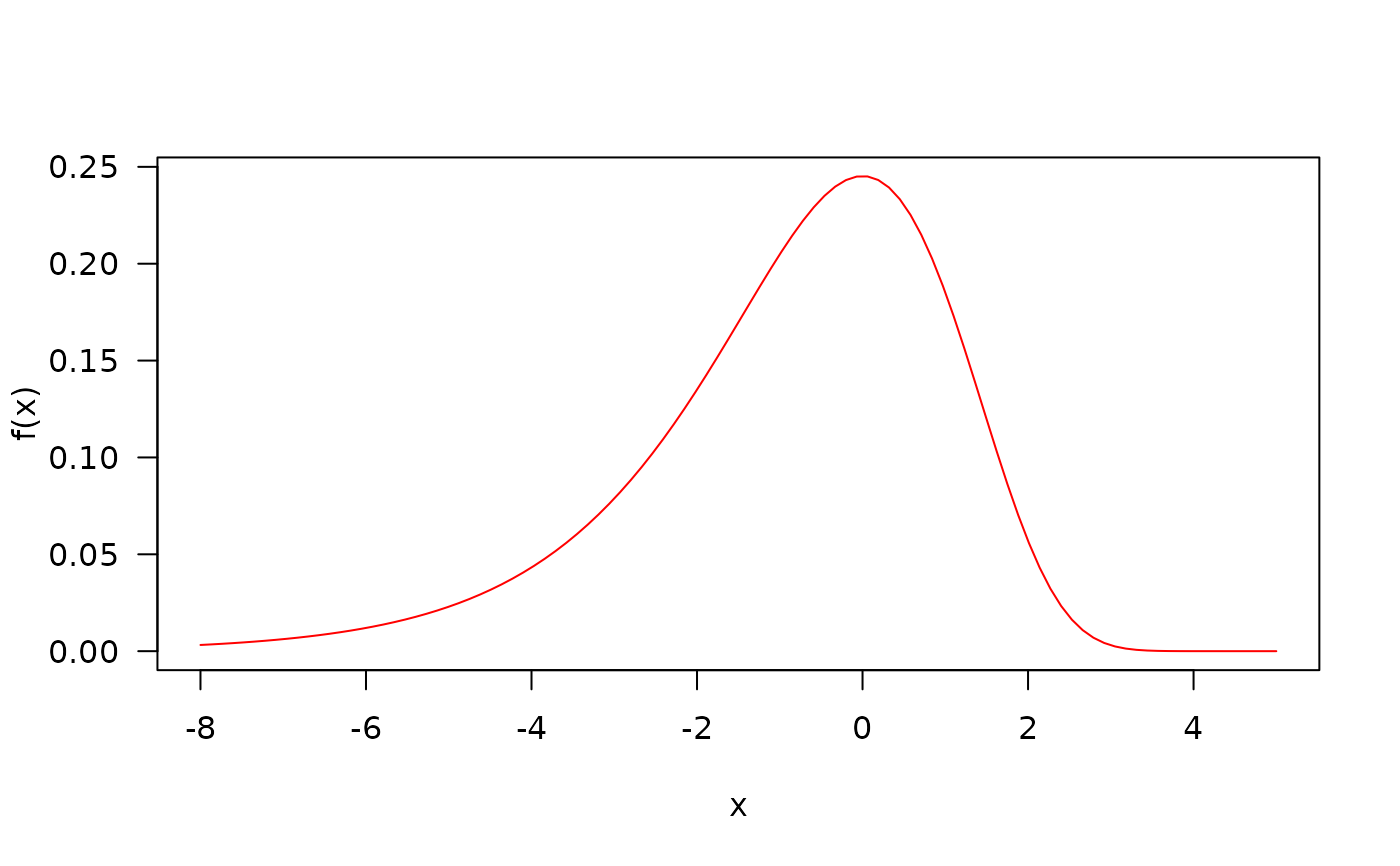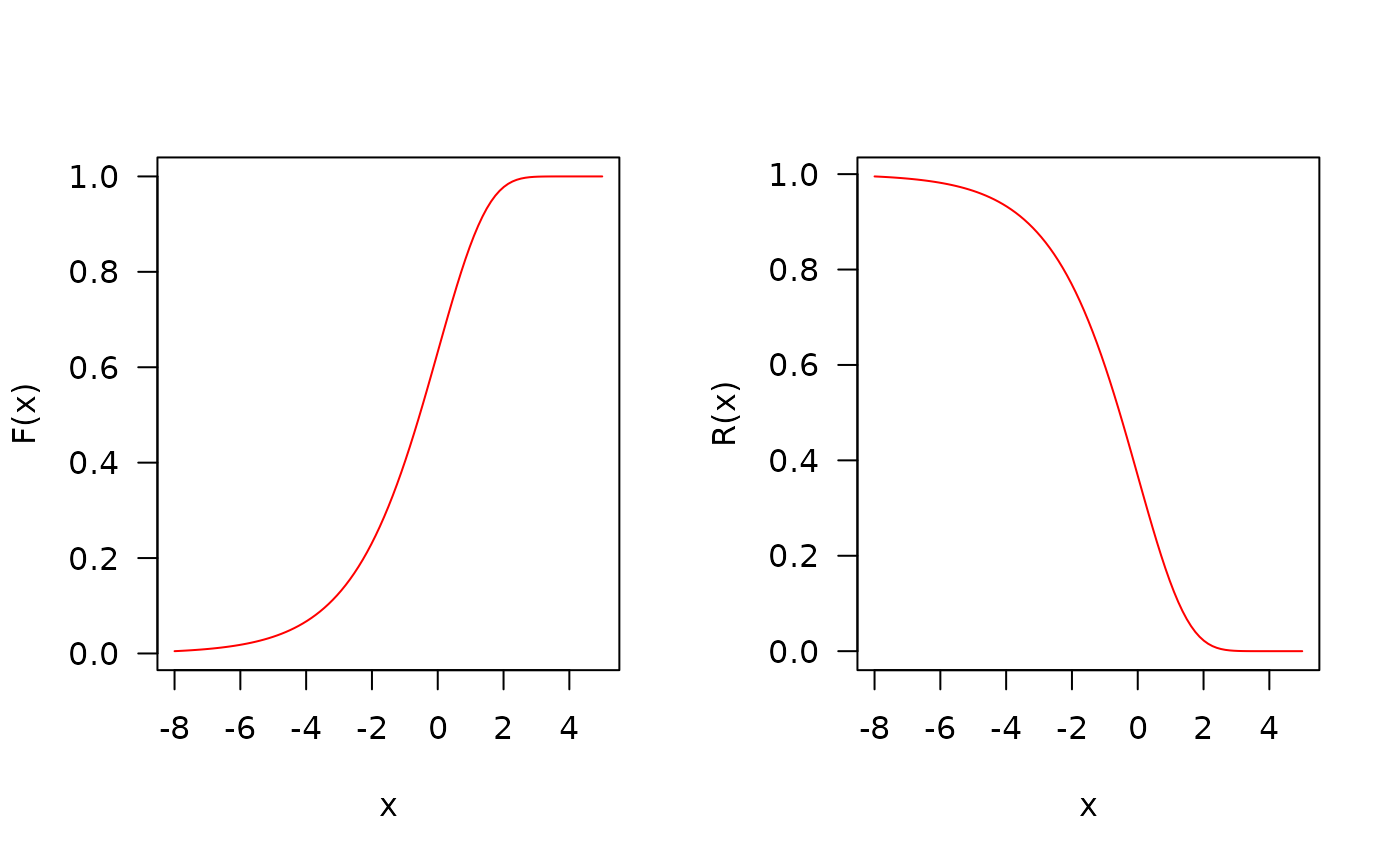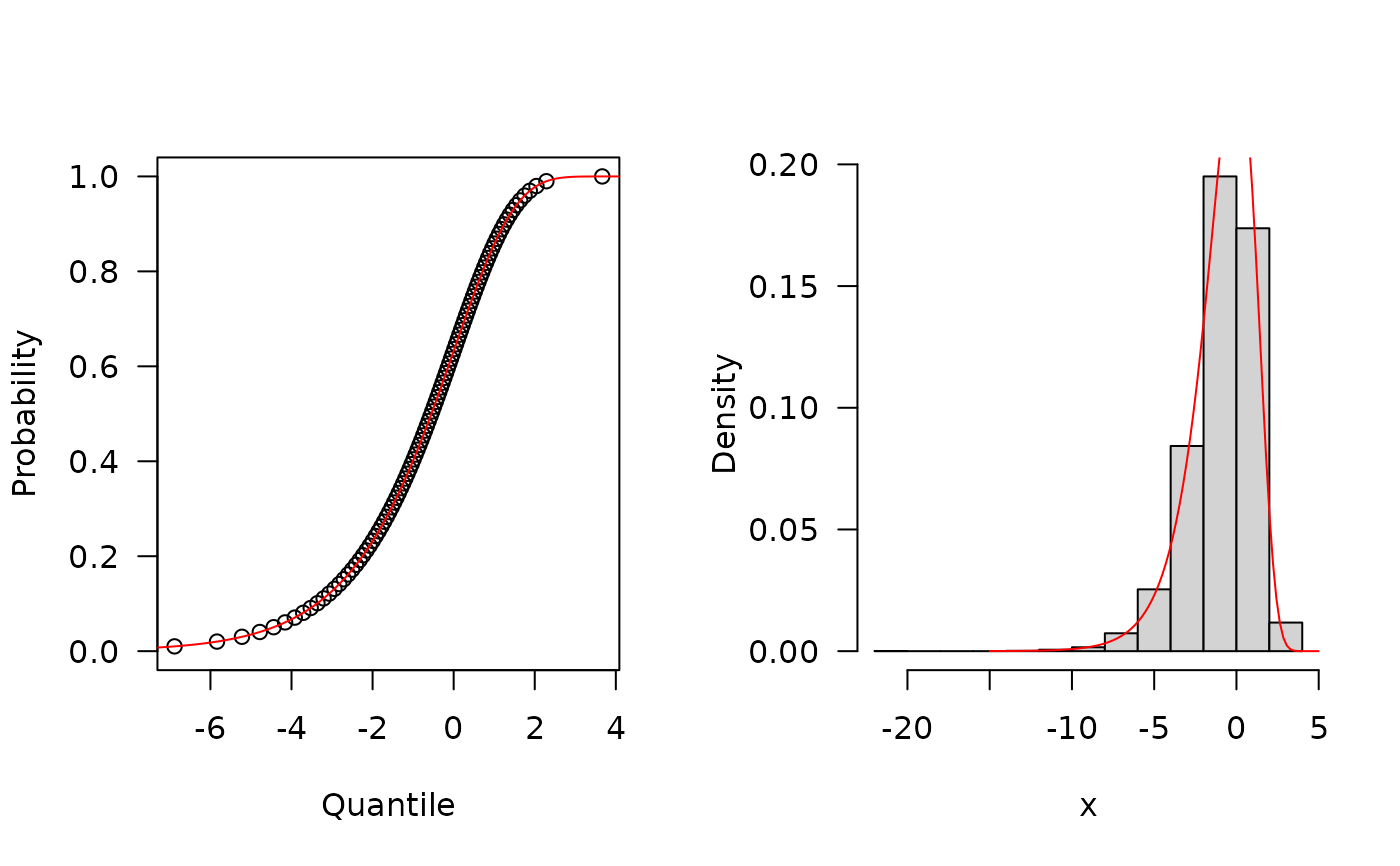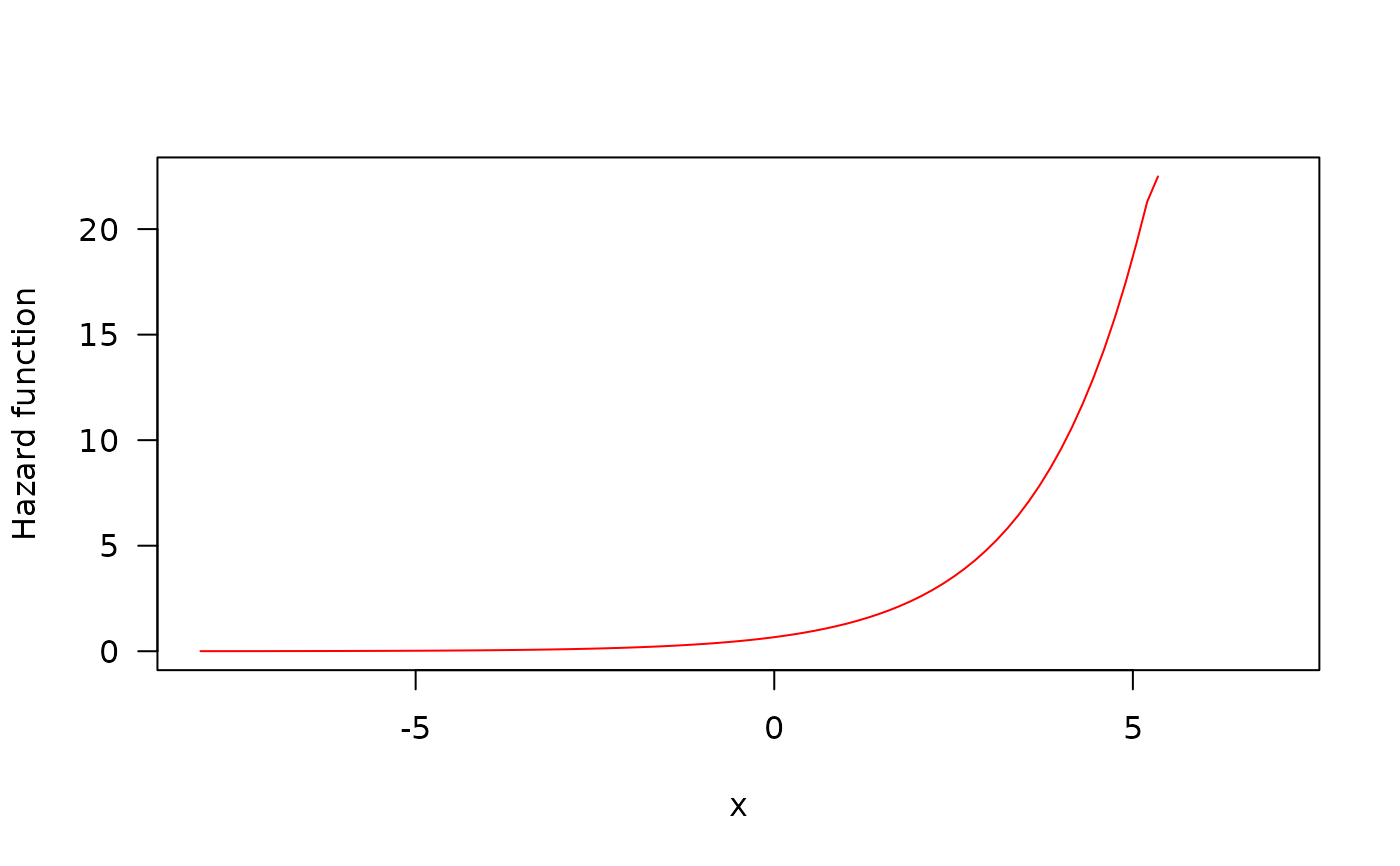Density, distribution function, quantile function,
random generation and hazard function for the Log-Weibull distribution
with parameters mu and sigma.
Usage
dLW(x, mu, sigma, log = FALSE)
pLW(q, mu, sigma, lower.tail = TRUE, log.p = FALSE)
qLW(p, mu, sigma, lower.tail = TRUE, log.p = FALSE)
rLW(n, mu, sigma)
hLW(x, mu, sigma)Value
dLW gives the density, pLW gives the distribution
function, qLW gives the quantile function, rLW
generates random deviates and hLW gives the hazard function.
Details
The Log-Weibull Distribution with parameters mu
and sigma has density given by
\(f(y)=(1/\sigma) e^{((y - \mu)/\sigma)} exp\{-e^{((y - \mu)/\sigma)}\},\)
for - infty < y < infty.
Author
Amylkar Urrea Montoya, amylkar.urrea@udea.edu.co
Examples
old_par <- par(mfrow = c(1, 1)) # save previous graphical parameters
## The probability density function
curve(dLW(x, mu=0, sigma=1.5), from=-8, to=5,
col="red", las=1, ylab="f(x)")
 ## The cumulative distribution and the Reliability function
par(mfrow=c(1, 2))
curve(pLW(x, mu=0, sigma=1.5),
from=-8, to=5, col="red", las=1, ylab="F(x)")
curve(pLW(x, mu=0, sigma=1.5, lower.tail=FALSE),
from=-8, to=5, col="red", las=1, ylab="R(x)")
## The cumulative distribution and the Reliability function
par(mfrow=c(1, 2))
curve(pLW(x, mu=0, sigma=1.5),
from=-8, to=5, col="red", las=1, ylab="F(x)")
curve(pLW(x, mu=0, sigma=1.5, lower.tail=FALSE),
from=-8, to=5, col="red", las=1, ylab="R(x)")
 ## The quantile function
p <- seq(from=0, to=0.99999, length.out=100)
plot(x=qLW(p, mu=0, sigma=1.5), y=p, xlab="Quantile",
las=1, ylab="Probability")
curve(pLW(x, mu=0, sigma=1.5), from=-8, to=5, add=TRUE, col="red")
## The random function
hist(rLW(n=10000, mu=0, sigma=1.5), freq=FALSE,
xlab="x", las=1, main="")
curve(dLW(x, mu=0, sigma=1.5), from=-15, to=6, add=TRUE, col="red")
## The quantile function
p <- seq(from=0, to=0.99999, length.out=100)
plot(x=qLW(p, mu=0, sigma=1.5), y=p, xlab="Quantile",
las=1, ylab="Probability")
curve(pLW(x, mu=0, sigma=1.5), from=-8, to=5, add=TRUE, col="red")
## The random function
hist(rLW(n=10000, mu=0, sigma=1.5), freq=FALSE,
xlab="x", las=1, main="")
curve(dLW(x, mu=0, sigma=1.5), from=-15, to=6, add=TRUE, col="red")
 ## The Hazard function
par(mfrow=c(1,1))
curve(hLW(x, mu=0, sigma=1.5), from=-8, to=7,
col="red", ylab="Hazard function", las=1)
## The Hazard function
par(mfrow=c(1,1))
curve(hLW(x, mu=0, sigma=1.5), from=-8, to=7,
col="red", ylab="Hazard function", las=1)
 par(old_par) # restore previous graphical parameters
par(old_par) # restore previous graphical parameters